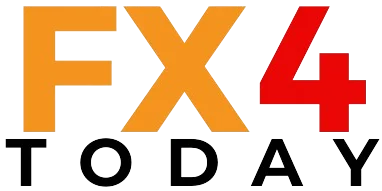The price of Ethereum fell to just under $2,400 after former US President Donald Trump’s sudden cancellation of trade negotiations with Canada over new digital levies and perennial tariffs disputes. The political event put the market on edge, sending Ethereum into a defensive trading range against already poor funding rates and waning investor optimism. With a potential death cross in the making on technical charts, ETH is at risk of a massive decline unless it crosses above crucial resistance at $2,850. Although there is still upside if momentum changes, the prevailing macroeconomic and geopolitical environment indicates that traders are preparing for more volatility.”
KEY LOOKOUTS
• A possible death cross between the 50-day and 100-day SMAs might initiate a 35% drop, consistent with past historical trends.
• Ethereum sentiment diminishes as President Trump suspends trade negotiations with Canada due to unequal digital taxes and levies.
• ETH’s funding levels have gone negative several times this week, indicating risk-averse investor sentiment and waning retail positivity.
• ETH needs to clear $2,850 to render the bearish view inaccurate; otherwise, it is heading to $1,700 if support gives way.

The price of Ethereum fell a little below the $2,400 level on Friday after President Trump made a sudden announcement to cancel trade negotiations with Canada over new digital services taxes and long-standing tariff disagreements. Though equities had a positive response to reports of a done US-China trade deal at first, this quickly turned sour after Trump’s announcement, pulling crypto sentiment along with it. Ethereum, which has been weakening through the negative funding rates and weighted sentiment decline, is now under more pressure with technical indicators pointing towards the possibility of a death cross. Should this bearish trend confirm, ETH would see its price take a major fall, supporting the carefulness that has recently been adopted by investors through persistent macroeconomic uncertainty.
Ethereum fell under $2,400 after President Trump cancelled trade negotiations with Canada, triggering risk-off sentiment. Poor funding rates and investor wariness are hindering ETH, which is now threatened by a possible death cross. A confirmed signal could result in a steep drop towards $1,700.
• Ethereum fell below $2,400 following President Trump’s cancellation of trade negotiations with Canada, triggering market uncertainty.
• Trump used Canada’s Digital Services Tax on U.S. technology companies as a pretext for halting talks, ratcheting up trade tensions.
• ETH financing rates went negative several times this week, indicating increasing bearish sentiment among traders.
• Weighted sentiment fell sharply to levels not seen since previous trade war threats in March.
• A possible death cross between the 50-day and 100-day SMAs might presage a 35% price decline, repeating previous trends.
• ETH saw more than $50 million in liquidations with longs representing most of the losses.
• Resistance is at $2,850, and a breakout above this may nullify the bearish scenario and have $3,400 as its target.
Ethereum’s price movement in the recent past has been driven more by geopolitical events than on-chain metrics. Former President Donald Trump’s move to cut trade talks with Canada has brought back trade war tensions, especially after blaming Canada for charging U.S. tech companies with discriminatory digital service taxes. The action not only caused volatility in mainstream financial markets but also crossed over into the cryptocurrency market, adding to investors’ loss of confidence. The wider crypto market was broadly flat, with stock indices such as the S&P 500 and Nasdaq momentarily rallying before flagging.
ETHEREUM DAILY PRICE CHART

SOURCE: TradingView
Retail sentiment towards Ethereum has cooled significantly in spite of earlier enthusiasm driven by developments in global ceasefires and positive macroeconomic trends. Trump’s combative rhetoric and threats of fresh tariffs have introduced uncertainty, particularly for risk-averse assets such as cryptocurrencies. Market participants appear to be treading cautiously, avoiding large commitments amid the political noise. Ethereum’s future movement now hinges heavily on how global markets absorb these geopolitical shifts and how investors balance optimism from trade progress elsewhere with renewed tensions close to home.
TECHNICAL ANALYSIS
Ethereum indicates the beginning of possible bearish momentum as the 50-day Simple Moving Average (SMA) approaches a crossover below the 100-day SMA, a pattern called a “death cross.” The pattern, traditionally linked to bear markets, increases the possibility of a steep downturn if it indeed manifests. Relative Strength Index (RSI) is just short of the neutral area, indicating indecision in momentum, and the Stochastic Oscillator is probing its overbought threshold. If both indicators are rejected, it may add to downward pressure. Yet, a continuation beyond the $2,850 resistance level would nullify the bearish setup and provide the way for a bull breakout.

FORECAST
If Ethereum is able to bounce above the critical resistance of $2,850, it may initiate a fresh bullish trend. This break would most likely attract fresh buying interest and investor attention, compelling ETH towards the next psychological level of $3,400. Favorable momentum could be fueled by better sentiment, positive macroeconomic news, or reduced geopolitical tensions. A strong break past $3,400 would set the stage for a retest of year-highs and reinforce Ethereum’s position in the wider crypto market.
Conversely, in the event that Ethereum confirms the imminent death cross between the 50-day and 100-day SMAs, it would spell a massive price correction. According to historical trends, ETH can drop by as much as 35%, lowering the price to the $1,700 support level. Sustained negative funding rates, poor sentiment, and continued geopolitical tensions might further accelerate this decline. A failure to maintain above the key support levels in the $2,300–$2,400 region could provoke further selling from both derivatives and spot traders.






